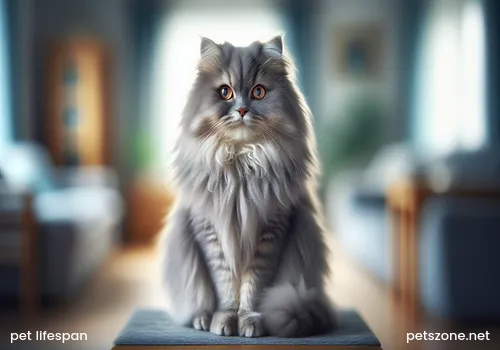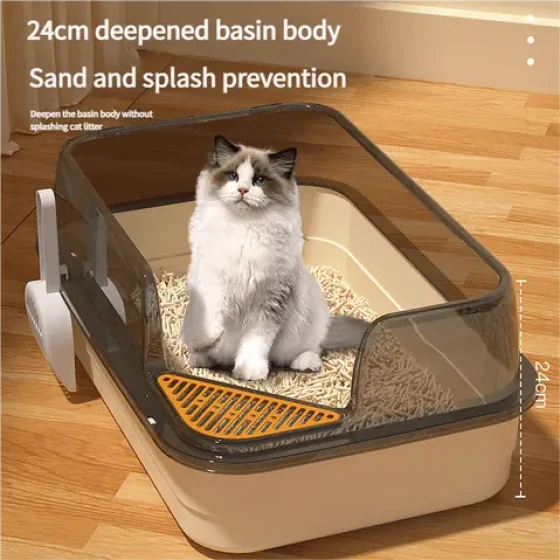Why Pets' Lifespans Are Shorter Than Humans_Unlocking the Scientific Reasons Pets Live Shorter Than Humans
Why are the life journeys of our beloved pet companions always much shorter than those of humans? This is a question that evokes deep feelings and also contains profound biological mysteries. Simply put, pets have shorter lifespans than humans mainly because of their faster physiological metabolism, species-specific aging mechanisms, differences in body size and genetic factors, as well as the different survival environments and challenges they face in the long river of life evolution on Earth compared to humans.

The relationship between humans and pets has a long history; they bring us endless joy and companionship. However, when we compare our own life lengths to theirs, we always feel a bit sad. A dog or cat might complete its whole life in just a decade or even less. To understand this difference, we need to explore it from a biological perspective.
Biological Clock: Metabolism Speed and Life Process
Imagine if life were a high-speed machine; the "engine" speed varies among species. Many small animals, including our common cats and dogs, usually have physiological metabolism rates much faster than large animals such as humans. This means their cell division, growth, energy consumption, and other life activities proceed more rapidly. Fast metabolism is like flipping pages quickly in the “book” of life; although many "stories" happen in a unit of time, the total pages of the book are limited.
Take dogs, for example; during the first two years after birth, their growth rate is astonishing, quickly going from a puppy to an adult dog. Human babies, however, require over a decade or even 20 years to fully mature. This rapid early development reflects a shortened overall lifecycle. Aging mechanisms at the cellular level, such as the rate of telomere (chromosome end caps) shortening, also vary between species, affecting cell replication and repair capabilities, which in turn influence overall lifespan.
Species-Specific Aging Mechanisms
Every species has formed its unique survival strategies and physiological characteristics over long evolution, including ways and speeds of aging. Birds, reptiles, and mammals each have different life trajectories. Even among mammals, dogs and cats age differently.
Research shows that genetic differences within species significantly impact lifespan. For instance, dog lifespans vary by breed; generally, small breeds like Poodles and Chihuahuas live longer on average than large breeds like Great Danes and Bernese Mountain Dogs. This involves complex genetic regulation and physiological mechanisms. Although cats don’t vary as much in size as dogs, lifespans differ among breeds and individuals.
Influence of Body Size: An Interesting Dimension
As mentioned earlier, differences in dog sizes relate to lifespan, revealing that body size somewhat correlates with lifespan, but this relation is not a simple “bigger means shorter life” or “smaller means longer life” absolute rule.
Within the same species, such as different dog breeds, generally smaller dogs live longer on average. This may be because large dogs grow faster, their cells replicate more frequently, possibly accelerating some aging processes, or that their bones, hearts, and other systems bear more stress.
However, when comparing across species, the situation becomes complex. A tiny mouse may live only a few years, while a giant blue whale can live close to a century. This indicates that besides size, other crucial factors like metabolic rate, cell repair ability, living environment, and presence of predators play important roles. Therefore, size is just one factor affecting lifespan and cannot be generalized.
Environment and Evolution: Survival Pressure Shapes Lifecycles
In nature, animal lifespans are deeply affected by environmental pressures. Wild animals face threats from predators, food shortages, diseases, and other survival challenges. Species that reproduce rapidly, grow fast, and adapt quickly to their environments tend to survive and propagate more easily. Under such evolutionary pressure, a shorter lifecycle can be an advantage since it allows faster generational turnover and adaptability to changing environments.
Human ancestors also faced severe survival challenges in nature, but with the progress of civilization, we gradually freed ourselves from many natural limits. Agriculture, medicine, public health, and social cooperation have greatly improved human survival rates and extended life expectancy. Modern pets enjoy much-improved living conditions, better food, and medical care thanks to human care, yet their biological makeup still retains some traits of their wild ancestors.
Human Medicine and Social Factors: Technology-Enabled Longevity
The significant increase in average human lifespan results from modern medicine, public health, and improved lifestyles. Vaccinations, antibiotics, surgical techniques, chronic disease management, nutrition improvements, environmental sanitation, and more effectively prevent and treat many diseases, allowing humans to live longer and healthier lives.
Veterinary medicine has also made great strides over recent decades, with many diseases now controllable or curable by vets, improving pets’ life quality and longevity. However, veterinary healthcare’s coverage, accessibility, and cost still lag behind human medicine. Meanwhile, human social structures and family support systems provide longer-term care and support to individuals.
Frequently Asked Questions (FAQ)
- How many pet years equal a human year?
This is a common simplified expression but not precise. Dogs and cats develop much faster in early life than humans, so simple linear conversion is unscientific. Generally, a dog’s first year roughly equals 15 human years, the second year about 9 human years, and afterward, the conversion rate gradually decreases, varying by breed and size. Cats have a similar conversion: the first year equals about 15 human years, the second about 24, and after that, about 4 human years are added per pet year. A more scientific understanding is that they just experience life stages much faster than us. - How to help my pet live longer?
While we cannot change a pet’s species traits, providing good living conditions can help them maximize their biological potential. This includes offering nutritionally balanced, quality food; ensuring adequate exercise appropriate to age and breed; regular vet check-ups and vaccinations; proper deworming; maintaining a good living environment; giving plenty of love and companionship to reduce stress. Early detection and treatment of diseases are crucial for extending pet lifespan. - Are pets’ lifespans short because of their small size?
As stated in the article, the relationship between size and lifespan is complex. Within the same species (like dogs), smaller size often correlates with longer life; but across species, there is no simple correlation. Lifespan is determined by deeper biological mechanisms, with size being just one influencing factor.
Treasure the Time Together
Although pets’ lives are shorter than humans’, this does not diminish the important roles they play in our lives. They use all of their life to accompany us, and every day may be a precious part of their existence. Understanding the differences in their lifecycles is not to feel sad but to better cherish every moment shared with them. High-quality companionship, scientific feeding, and care are the best rewards we can offer these loyal partners, letting them enjoy infinite happiness and health in their limited lives.





